Papers by Helen Askitopoulou
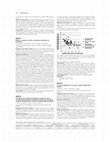
European Journal of Anaesthesiology, 2004
Pharmacology sevoflurane was calculated from sevoflurane and sevoflurane-blood reference curves. ... more Pharmacology sevoflurane was calculated from sevoflurane and sevoflurane-blood reference curves. Results and Discussion: Two-phase exponential fitting revealed that at the arterial port sevoflurane uptake rapidly increased (halftime 0.5 min, 0.11±0.03 mM) and reached a steady state at a value of 0.18±0.05 mM (halftime 12.9 min). At the venous port sevoflurane uptake was slower and mono-exponential curve fitting revealed that a steady state was reached at 0.13±0.01 mM with halftime of 12.1 min. Our overall blood-gas solubility coefficient for sevoflurane at 37 O C was 0.62±0.10. Conclusion(s): Sevoflurane uptake through the oxygenator takes longer than expected from inhalation studies. Future research will focus on the sevoflurane wash-in and wash out concentration curves in the arterial, venous and volatile compartments of patients during craniotomy.
Acta Anaesthesiologica Scandinavica, 2005
tatd.org.tr
... İngiltere David Williams, Temsilci, Acil Hekimleri Birliği (CEM), EuSEM Önceki Başkanı ... Ha... more ... İngiltere David Williams, Temsilci, Acil Hekimleri Birliği (CEM), EuSEM Önceki Başkanı ... Hasta yakınlarıyla, polisle, acil sağlık hizmetleri kapsamındaki iletişimle, telefon tartışmalarıyla ve medyayla meşgul olurken ortaya ne tür mahremiyet sorunları çıkabileceğini bilmeleri gerekir. ...
American Journal of Respiratory and Critical Care Medicine, 1995

Η ΤΕΧΝΙΚΗ ΤΗΣ ΑΥΤΟΜΑΤΟΥ ΑΝΑΠΝΟΗΣ ΥΠΟ ΣΥΝΕΧΗ ΘΕΤΙΚΗΝ ΕΚΠΝΕΥΣΤΙΚΗΝ ΠΙΕΣΙΝ (CPAP) ΕΦΗΡΜΟΣΘΗ ΕΙΣ ΕΝΗΛ... more Η ΤΕΧΝΙΚΗ ΤΗΣ ΑΥΤΟΜΑΤΟΥ ΑΝΑΠΝΟΗΣ ΥΠΟ ΣΥΝΕΧΗ ΘΕΤΙΚΗΝ ΕΚΠΝΕΥΣΤΙΚΗΝ ΠΙΕΣΙΝ (CPAP) ΕΦΗΡΜΟΣΘΗ ΕΙΣ ΕΝΗΛΙΚΑΣ ΑΣΘΕΝΕΙΣ ΑΝΑΡΡΩΝΥΟΝΤΑΣ ΕΞ ΕΓΧΕΙΡΗΣΕΩΝ ΑΝΟΙΚΤΗΣ ΚΑΡΔΙΑΣ ΥΠΟ ΕΞΩΣΩΜΑΤΙΚΗΝ ΚΥΚΛΟΦΟΡΙΑΝ. ΕΥΡΕΘΗ ΟΤΙ: Α) Η ΚΑΡΔΙΑΚΗ ΠΑΡΟΧΗ ΠΑΡΕΜΕΙΝΕΝ ΑΜΕΤΑΒΛΗΤΟΣ ΕΠΙ ΤΟΥ ΣΥΝΟΛΟΥ ΤΩΝ ΑΣΘΕΝΩΝ, ΗΥΞΗΘΗ ΔΕ ΕΛΑΦΡΩΣ ΕΙΣ ΤΗΝ ΟΜΑΔΑ ΤΩΝ ΑΣΘΕΝΩΝ ΑΝΕΥ ΠΝΕΥΜΟΝΙΚΗΣ ΑΓΓΕΙΑΚΗΣ ΝΟΣΟΥ, Β) Η ΟΞΥΓΟΝΩΣΙΣ ΤΟΥ ΑΙΜΑΤΟΣ ΕΒΕΛΤΙΩΘΗ,ΜΕ ΑΠΟΤΕΛΕΣΜΑ ΤΗΝ ΣΗΜΑΝΤΙΚΗΝ ΜΕΙΩΣΙΝ ΤΗΣ ΚΥΨΕΛΙΔΟ - ΑΡΤΗΡΙΑΚΗΣ ΔΙΑΦΟΡΑΣ ΤΗΣ ΤΑΣΕΩΣ ΟΞΥΓΟΝΟΥ (Α - APO2) ΙΔΙΑ ΕΙΣ ΤΟΥΣ ΑΣΘΕΝΕΙΣ ΜΕΤΑ ΠΝΕΥΜΟΝΙΚΗΣ ΥΠΕΡΤΑΣΕΩΣ ΚΑΙ ΜΙΤΡΟΕΙΔΟΠΑΘΕΙΑΣ ΚΑΙ Γ) Η ΠΟΣΟΤΗΣ ΤΟΥ ΜΕΤΑΦΕΡΟΜΕΝΟΥ ΠΡΟΣ ΤΟΥΣ ΙΣΤΟΥΣ ΟΞΥΓΟΝΟΥ ΟΜΟΙΩΣ ΗΥΞΗΘΗ, ΕΙΣ ΤΟΥΣ ΑΣΘΕΝΕΙΣ ΜΕΤΑ ΠΝΕΥΜΟΝΙΚΗΣ ΑΓΓΕΙΑΚΗΣ ΝΟΣΟΥ. ΕΠΟΜΕΝΩΣ, Η ΧΡΗΣΙΣ ΤΗΣ ΑΥΤΟΜΑΤΟΥ ΑΝΑΠΝΟΗΣ ΜΕΤΑ CPAP ΒΕΛΤΙΩΝΕΙ ΤΗΝ ΑΡΤΗΡΙΑΚΗΝ ΚΑΙ ΙΣΤΙΚΗΝ ΟΞΥΓΟΝΩΣΙΝ, ΑΝΕΥ ΕΠΙΔΕΙΝΩΣΕΩΣ ΤΗΣ ΚΑΡΔΙΑΚΗΣ ΠΑΡΟΧΗΣ.CONTINUOUS POSITIVE AIRWAY PRESSURE (CPAP) BREATHING WAS USED TO WEAN PATIENTS FROM IPPV AFTER OPEN - HEART SURGERY IN ADULT PATIENTS. SPONTANEOUS RESPIRATION (SR) U...

Geriatric Emergency Medicine, 2017
Ethics are central to the clinical practice of quality emergency medicine. Emergency physicians m... more Ethics are central to the clinical practice of quality emergency medicine. Emergency physicians must be able to recognise the ethical issues in the care of older patients who present to the emergency department and to respond to them in a manner that will provide the greatest benefit for each patient. The human rights of this vulnerable and diverse ageing population should be preserved and protected by unified and coordinated efforts. The decisions about the emergency treatment of these patients should be based on the moral framework of the four ethical principles of autonomy, non-maleficence, beneficence and justice. These principles serve as a useful framework for the main ethical issues involved in the emergency care of older people such as decision-making capacity, advance directives, fairness of treatment and resource allocation, end-of-life decisions, do not attempt resuscitation (DNAR) orders, older abuse and dementia. The same ethical principles should be considered when ensuring the ability of older patients to fulfil the requirements of ethical research in the emergency department.
European Journal of Emergency Medicine, 2020
of Recommendations • Informed consent means that a patient with decision-making capacity freely a... more of Recommendations • Informed consent means that a patient with decision-making capacity freely agrees to a treatment plan or procedure after an explanation of the diagnosis, the relevant options for treatment (including no treatment) and any related risks and benefits important to him/her. • In the Emergency Department, if it is not possible to find out a patient's wishes, treatment can be provided without his/her consent, as long as the treatment is immediately necessary to save the patient's life or to prevent a serious deterioration of his/her condition and it is in his/her best interests. • In such situations, the physician should inform the patient or his/her legally designated representative at the earliest opportunity and obtain consent for any ongoing treatment.
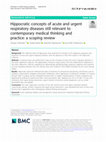
BMC Pulmonary Medicine, 2020
BackgroundThe collected works of Hippocrates were searched for concepts on the diagnosis, prognos... more BackgroundThe collected works of Hippocrates were searched for concepts on the diagnosis, prognosis, and treatment of acute and urgent respiratory diseases, with the objective to trace their origins in theHippocratic Collection.MethodsA scoping review was performed to map out key concepts of acute and severe respiratory diseases in the entireHippocratic Collection.The digital libraryThesaurus Lingua Graeca (TLG)was researched for references in the entireHippocratic Collectionregarding the epidemiology, pathophysiology, prognosis, diagnosis and treatment of acute respiratory diseases; then, the relevant texts were studied in their English translation by the Loeb Classical Library.ResultsHippocratic physicians followed principles of treatment for pneumonia and pleurisy, still relevant, such as hydration, expectoration, analgesia and prompt mobilisation. Other approaches, including the inhalation of“vapours through tubes”in angina, can be considered as forerunners of modern medical pra...
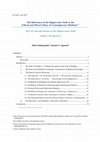
European Spine Journal, 2018
This is the second part of a paper on the relevance and significance of the Hippocratic Oath to m... more This is the second part of a paper on the relevance and significance of the Hippocratic Oath to modern medical ethical and moral values with the aim at answering questions on controversial issues related to the Oath. Part I argued that the general attributes and ethical values of the Oath are relevant to the modern world. Part II attempts to elucidate the interpretation of the specific injunctions of the Oath from today's perspective in relation to ethical values concerning the duties of physicians to patients and society. The objective is to prove that the Oath has established the general context of medical ethics of the physicianpatient relationship, which reflects longlasting moral values that still define the medical profession. The Oath has exemplified the fundamental modern ethical principles of beneficence, non-maleficence and confidentiality. Its foremost message focuses on patients' best interests and not on the prohibition of surgery, euthanasia or abortion, as is generally believed. Furthermore, the Oath as a code of professional identity has had a powerful impact on modem judicial opinions regarding medical ethics. In a lot of ways it is as relevant of the values of contemporary medicine as it was for ancient medicine.
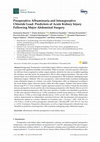
Journal of Clinical Medicine, 2018
Background: Postoperative Acute Kidney Injury (AKI) is a common and serious complication associat... more Background: Postoperative Acute Kidney Injury (AKI) is a common and serious complication associated with significant morbidity and mortality. While several pre- and intra-operative risk factors for AKI have been recognized in cardiac surgery patients, relatively few data are available regarding the incidence and risk factors for perioperative AKI in other surgical operations. The aim of the present study was to determine the risk factors for perioperative AKI in patients undergoing major abdominal surgery. Methods: This was a prospective, observational study of patients undergoing major abdominal surgery in a tertiary care center. Postoperative AKI was diagnosed according to the Acute Kidney Injury Network criteria within 48 h after surgery. Patients with chronic kidney disease stage IV or V were excluded. Logistic regression analysis was used to evaluate the association between perioperative factors and the risk of developing postoperative AKI. Results: Eleven out of 61 patients de...
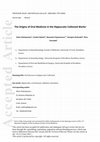
Journal of oral pathology & medicine : official publication of the International Association of Oral Pathologists and the American Academy of Oral Pathology, 2017
The collected works of Hippocrates describe for the first time in a systematic way a large number... more The collected works of Hippocrates describe for the first time in a systematic way a large number of oral diseases, such as ulcers, inflammations, abscesses and tumours from the epiglottis, mouth, tongue, palate, uvula and the sublingual area. Several of these case reports are remarkable for the accurate observation of clinical symptoms and signs, the aetiology, the pathogenesis and their therapeutic approach in relation to prognosis. The Hippocratic authors report cases of aphthae as part of a polysystemic disease, described many centuries later by Behçet and Adamantiades, while they associate features of splenomegaly from endemic malaria with gingivitis (ulitis). Benign lip ulcers, caused by sharp teeth bites, were distinguished from the difficult to treat herpes labialis (herpes) and from the necrotising nomae. Although staphylitis and angina (kynanche) were attributed to phlegm accumulation, they were recognised as true emergencies when they were associated with a swollen tongue...
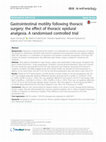
BMC anesthesiology, Jan 16, 2017
Impairment of gastrointestinal (GI) motility is an undesirable but inevitable consequence of surg... more Impairment of gastrointestinal (GI) motility is an undesirable but inevitable consequence of surgery. This prospective randomised controlled study tested the hypothesis that postoperative thoracic epidural analgesia (TEA) with ropivacaine or a combination of ropivacaine and morphine accelerates postoperative GI function and shortens the duration of postoperative ileus following major thoracic surgery compared to intravenous (IV) morphine. Thirty patients scheduled for major thoracic surgery were randomised to three groups. All patients had bowel motility assessments 1 week preoperatively. All patients received general anaesthesia. Group Ep-R received TEA with ropivacaine; group Ep-RM received TEA with ropivacaine and morphine and group IV-M received IV morphine via patient controlled analgesia pump (PCA). Bowel motility was assessed by clinical examination in addition to oro-ceacal transit time (OCTT) on the first and third postoperative days and colonic transit time (CTT). Overall ...
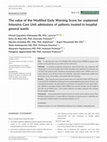
International journal of nursing practice, 2018
To determine the value of the Modified Early Warning Score (MEWS) for general ward patients and i... more To determine the value of the Modified Early Warning Score (MEWS) for general ward patients and its potential use as an alarm tool for ward nurses. A combined prospective-retrospective observational study was conducted with 153 patients in a university hospital (2013-2014). All patients were admitted to the intensive care unit (ICU) from general wards. Parameters retrospectively studied were 5 MEWS values at 4 hourly intervals, up to 20 hours before ICU admission. Parameters prospectively studied were ICU length of stay, ICU mortality, and mortality after ICU discharge. Most frequent severe adverse events were acute respiratory failure (39.9%) and septic shock (20.3%). Modified Early Warning Score increased gradually during the last 20 hours, and most patients remained in the wards, above a cut-off point ≥7 recorded at 4 hours before admission. Significant associations between latest MEWS score and ICU mortality and ICU length of stay were found. MEWS score≥ 7 hours before admission...
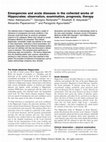
European Journal of Emergency Medicine, 2016
The collected works οf Hippocrates include a wealth of references to emergencies and acute condit... more The collected works οf Hippocrates include a wealth of references to emergencies and acute conditions; if the physician could treat these, he would be considered superior to his colleagues. Works most relevant to current Emergency Medicine are presented. They indicate Hippocrates' remarkable insight and attention to the value of close observation, meticulous clinical examination, and prognosis. Hippocrates and his followers disdained mystery and were not satisfied until they had discovered a rational cause to diseases. They assigned great significance to distressing signs and symptomsthe famous Hippocratic face, the breathing pattern, pain, seizures, opisthotonuspointing to a fatal outcome, which they reported to their patient. The principles of treatment of emergencies, such as angina, haemorrhage, empyema, ileus, shoulder dislocations and head injuries, are astonishingly similar to the ones used nowadays.
Resuscitation, Aug 9, 2016

Resuscitation, Jan 14, 2016
Europe is a patchwork of 47 countries with legal, cultural, religious, and economic differences. ... more Europe is a patchwork of 47 countries with legal, cultural, religious, and economic differences. A prior study suggested variation in ethical resuscitation/end-of-life practices across Europe. This study aimed to determine whether this variation has evolved, and whether the application of ethical practices is associated with emergency care organisation. A questionnaire covering four domains of resuscitation ethics was developed based on consensus: (A) Approaches to end-of-life care and family presence during cardiopulmonary resuscitation; (B) Determinants of access to best resuscitation and post-resuscitation care; (C) Diagnosis of death and organ donation (D) Emergency care organisation. The questionnaire was sent to representatives of 32 countries. Responses to 4-choice or 2-choice questions pertained to local legislation and common practice. Positive responses were graded by 1 and negative responses by 0; grades were reconfirmed/corrected by respondents from 31/32 countries (97%)...
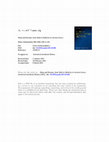
Journal of Anesthesia History, 2015
Starting from the epic poems of Homer and Hesiod in the 8 th century BCE, the significance attrib... more Starting from the epic poems of Homer and Hesiod in the 8 th century BCE, the significance attributed to sleep and dreams by Greek antiquity is traced in myths referring to the god of sleep, Hypnos, and the dream-gods, the Oneiroi. Hypnos was related to very ancient deities of darkness; his mother Nychta (Night), his twin brother Thanatos (Death) and his sons the Oneiroi (Dreams) who dwelled "past the gates of the dead". Early in the 6 th century BCE, induced sleep, "enkoimesis" or dream incubation, became an established healing practice in the sanctuaries of Asklepios I. Later, starting in the 4 th century BCE, sleep and dreams were among a series of biological phenomena that became an integral part of the Greek physician's practice. Several Hippocratic treatises explore the medical significance of sleep and dreams, as symptoms of disease. The treatise On Regimen IV uses dreams as prognostic and diagnostic signs of normal or abnormal internal conditions. This treatise distinguishes two types of dreams, those sent by the gods and those sent by the soul. The soul observes the body during sleep and informs on any impending problem manifested by dreams. By interpreting patients' dreams, the Hippocratic physician made a prognosis about the condition of the patient's body, the effects of diet and physical exercise and adjusted the regimen to prevent deterioration of disease. It is the study of sleep and dreams in ancient Greece that provides us with knowledge on the evolution of these notions from mythology to medicine. I In this article the Greek name Asklepios will be used instead of the Latin transliteration Asclepius. Highlights Hypnos and Oneiroi, gods of sleep and dreams, were associated to oblivion and pain The sorceress Medea was the first to induce pharmaceutical sleep in ancient Greece Sleep induction, enkoimesis, was a healing practice in the sanctuaries of Asklepios "Euthanasia", as voluntary permanent sleep, was known in ancient Greece Greek physicians considered sleep and dreams as biological phenomena Hippocratic physicians used sleep and dreams for medical prognosis and diagnosis
Studies in health technology and informatics
Emergency Medicine is considered the neglected specialty of contemporary medicine, although it is... more Emergency Medicine is considered the neglected specialty of contemporary medicine, although it is widely acknowledged that improvement in the outcome of the acutely and critically ill depends on its timely and effective management during the critical first hour [1], the so called "golden hour". The crucial question therefore is whether Telematics can affect this outcome and in particular how they can assist the existing models of Prehospital Emergency Medical Services (EMS) to meet this goal. The Hector Pilot of Crete tries to give a convincing answer to this question, taking into account the concept and some of the requirements of Emergency Medicine.

Αν και η Ραχιαία Αναισθησία (ΡΑ) θεωρείται μια ασφαλής τεχνική αναισθησίας, δεν στερείται επιπλοκ... more Αν και η Ραχιαία Αναισθησία (ΡΑ) θεωρείται μια ασφαλής τεχνική αναισθησίας, δεν στερείται επιπλοκών. Η συχνότητα εμφάνισης καρδιακής ανακοπής μετά από ραχιαία αναισθησία είναι 6,4/10.000 ασθενείς. Το γεγονός ότι αυτά τα συμβάντα σοβαρής βραδυκαρδίας συμβαίνουν σε νέα και υγιή άτομα κατά τη διάρκεια μικρών σε βαρύτητα χειρουργικών επεμβάσεων, εγείρει το ερώτημα αν και κατά πόσο θα μπορούσαν να προβλεφθούν και να αποφευχθούν. Οι παράγοντες κινδύνου για την εμφάνιση σοβαρής βραδυκαρδίας είναι η αρχική καρδιακή συχνότητα < 60 σφίξεις/λεπτό, η κατάταξη κατά ASA I, το επίπεδο του αισθητικού αποκλεισμού πάνω από Θ6 και η ηλικία < 50 ετών. Η παρούσα μελέτη ερεύνησε τους παράγοντες κινδύνου, και τη χρησιμότητα και ευαισθησία της μεταβλητότητας της καρδιακής συχνότητας (ΜΚΣ) στην αναγνώριση των ασθενών αυτών που είναι επιρρεπείς στη εκδήλωση σοβαρής βραδυκαρδίας κατά τη ΡΑ. Στη μελέτη συμπεριλήφθηκαν 80 ασθενείς, ASA I-II, ηλικίας 21-60 ετών που υπεβλήθησαν σε προγραμματισμένες χειρουργ...











Uploads
Papers by Helen Askitopoulou